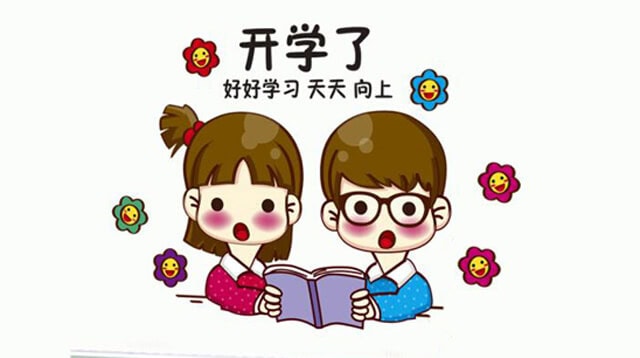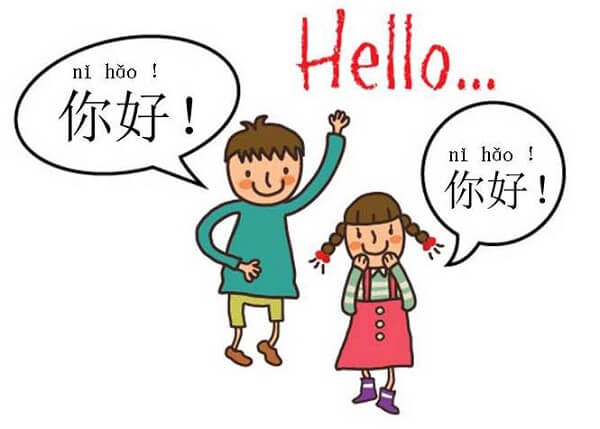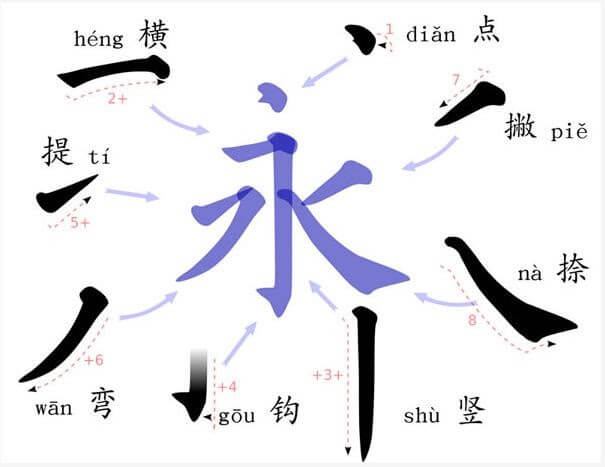Chinese is the most spoken language in the world, due to the size of the country's population. Likewise, Chinese emigrants can be found almost anywhere in the world, causing the spread of their culture and language. Their proximity to their fellow countrymen has helped to create large communities, for them to become influential communities, helping each other to establish businesses and other organizations that benefit their fellow citizens.
Note: Chinese Notarized Translation Service
Because China has remained closed to the West for so long, people are interested in learning more about the country, its people and culture. China and its territories form such a large community, and China alone is home to 1,42 billion people. So it is inevitable that there are many Chinese languages as well as dialects. However, for the Western world, when the Chinese language is mentioned, it is either Mandarin or Cantonese. However, for translation companies, they need to know which Chinese version has to be handled when they are assigned a Chinese translation project.
Interesting facts about the Chinese language
As mentioned, several minority groups exist in China and its territories and each of them has their own language and jargon. However, due to government declarations, Mandarin has become the most spoken language in China, which is the first language spoken by 918 million people.
Note: Key Differences Between English And Arabic
- While there are many people interested in learning the language, according to many people, Chinese is the most difficult language to learn. Chinese is very different from English, which is one reason why English speakers have a hard time learning it. Chinese has a different writing system. It has different sounds and pronunciation styles as well as different grammar. Overall, Chinese and English are like night and day.
- A Chinese learner will take years to master the language and it is very difficult to reach the level of fluency of a native speaker. To be able to read a newspaper, you must master at least 3.000 characters. But the fact that there are more than a few thousand Chinese characters makes this task certainly daunting.
The written forms of Chinese give no indications regarding their pronunciation. It should be learned separately. Complicating matters is that in some cases, two or more characters make up about 67% of Chinese words. - Even if they look similar, Chinese writing has several calligraphic styles. Traditionally, there are five styles of calligraphy: Zuan (seal book), Li (letter book), Tsao (dragon book), Hsin (xing book) and Kai (revelation letter). They are also considered art styles. Among them, seals are the most popular. The Han people developed the style and first appeared in the Zhou Dynasty (1045-221 BC).
- The language has some words that sound similar. This is another fact that makes it difficult for non-Chinese speakers to understand the difference between sound and word combinations. When you add mixed tones to it, it makes it difficult to tell them apart.
- In the modern world, the only existing hieroglyphs are Chinese. In fact, language is developed through the use of images. There are still many characters in the language that have evolved from ancient drawings depicting various things. For example, shan is the Chinese word used for the character 山 – which represents three peaks representing a mountainside.
- If you find it difficult to decipher a doctor's handwriting when you give a prescription, that difficulty will be doubled or even tripled when you try to read handwritten Chinese and typed Chinese. This is because the typed characters are neatly generated while the change in spelling will definitely change the way the same paper documents look.
- You probably already know that Chinese is one of the oldest languages in the world that is still being spoken. It is said that Giap Bone is one of the earliest examples of Chinese writing, which dates back to the Shang dynasty that existed in 1600-1046 BC. Although it is difficult to pinpoint an exact date, it is said that Chinese has been used for more than 3.000 years. In terms of age, English is about half that number.
- Furthermore, Chinese is a tonal language, with five tones that give a character different meanings. The best examples are: mā, ma, mǎ, that and ma. The first word is for mother, and the third is for horse.
- Several constituent parts usually make up Chinese characters. An example is the word slang. It is considered the most complex among the Chinese characters. It has 11 components and has 62 strokes. It's a mysterious character that has no meaning and is not used in modern Mandarin! It's an onomatopoeia for the sound of noodles hitting a chef's table.
- Chinese writing has some original or compound characters. It can include up to 64 strokes written in sequence.
- Exposure to Western culture resulted in the Chinese language having many loanwords. Some are borrowed from English, so when you walk around in modern Chinese cities, you may find some familiar words.
Difference between English and Chinese
Now that you know some interesting facts about the Chinese language, next comes the difference of this language from the English language. This will help you understand more about the language and prepare yourself for the obstacles you will face if you plan to learn Chinese. Of course, there are pluses and minuses in English versus Chinese in terms of grammar rules.
Note: Difference Between German And English
1. Chinese has no articles and verb inflections
In English, you have to use different articles. Verbs change according to the person and tense of the verb. In Chinese, these do not apply, making it easier for speakers to pick up the language. However, for Chinese people who want to learn English, this can be quite difficult. One thing to note is that Chinese does not have a "th."
2. There is no equivalent of the word “yes”
The closest you can use to the English word, yes, in Chinese is shi. But there are several ways to express consent that are commonly used in Chinese instead of yes. Depending on the question and the answer requested, yes or yes can be expressed in the following ways:
- Shì de – yes, that's right
- Dui – correct or right
- Xing – okay
- Yǒu – have (verbally)
- K yǐ – okay, fine, all right (verbally)
- No problem - no problem
- That's right, sure
- Hoo de – okay, fine, good
3. No alphabet
You may be pleased to know that the Chinese language has no alphabet, so it will be harder for you to master the language. However, there are thousands of characters that stand alone, harder to learn than the 26 letters in English. You can still use pinyin to transcribe Chinese characters into Roman characters. This makes it easier for learners to memorize them.
Note: Difference Between English And Russian
4. Does not distinguish between singular and plural forms dạng
English words have a plural form. The Chinese language does not distinguish between singular and plural. It retains the same form, which is another plus.
5. Tone changes the meaning of words
As a tonal language, the intonation used when pronouncing a word is an indication of the speaker's intention. Pitch has five intonations that change meaning completely and effectively. For example, in the phrase wǒ xiǎng wèn nǐ, when the third word is said using a descending voice, it means, “I want to ask you…” but then the wen in wǒ xiǎng wěn nǐ is said when up and down your voice becomes “I want to kiss you.”
6. Huge amount of characters
The Chinese language has 50.000 unique characters. Students need to memorize about 2.000 to 3.000 Chinese characters to be able to read a Chinese newspaper.
7. Focus on meaning, not structure
In Chinese, meaning is the main focus instead of structure, which is the concern of the English language, making sentences complex and long. But that helps people understand what is being said. But in Chinese, most sentences are short. There are long sentences, you will find that these are broken up into several short phrases, separated by commas.
These are the important differences between English and Chinese. These languages are internationally recognized and both are official languages used in Vietnam today. Mandarin is very important to the global economic community, so find the right medium to be properly understood by Chinese businessmen.
Although it is difficult to learn Chinese, when you want to communicate with Chinese partners, you do not need to struggle with the language. Idichthuat – professional Chinese translation company – cheap – accurate always satisfy all domestic and foreign customers.
We are a translation company providing translation services Chinese translation service specialized: economic, medical, marketing, IT,.. with the highest quality and accuracy guarantee for each translation. Please contact us immediately to receive the latest offers and after-sales for all customers.
Contact us today for the fastest service quote and consultation.
| ✔️ See more related information: | 👉 Reliable, Cheap, Professional Swedish Translation Chuyên |
| 👉 The Most Professional Electronic Translation | |
| 👉 Quick Translation of Seafood Documents | |

Nguyen Trung Khang - Talented interpreter and translator, passionate about translation
Nguyen Trung Khang is a talented interpreter and translator, with many years of experience in the field of translation and linguistics. He graduated from Ho Chi Minh City University of Education, majoring in Linguistics in 2015.
After graduating, Mr. Khang participated in a professional interpretation and interpretation training course at the University of Foreign Languages - Hanoi National University. He achieved a high-level certificate in interpreting and interpreting, and was also awarded a master's degree in linguistics.



